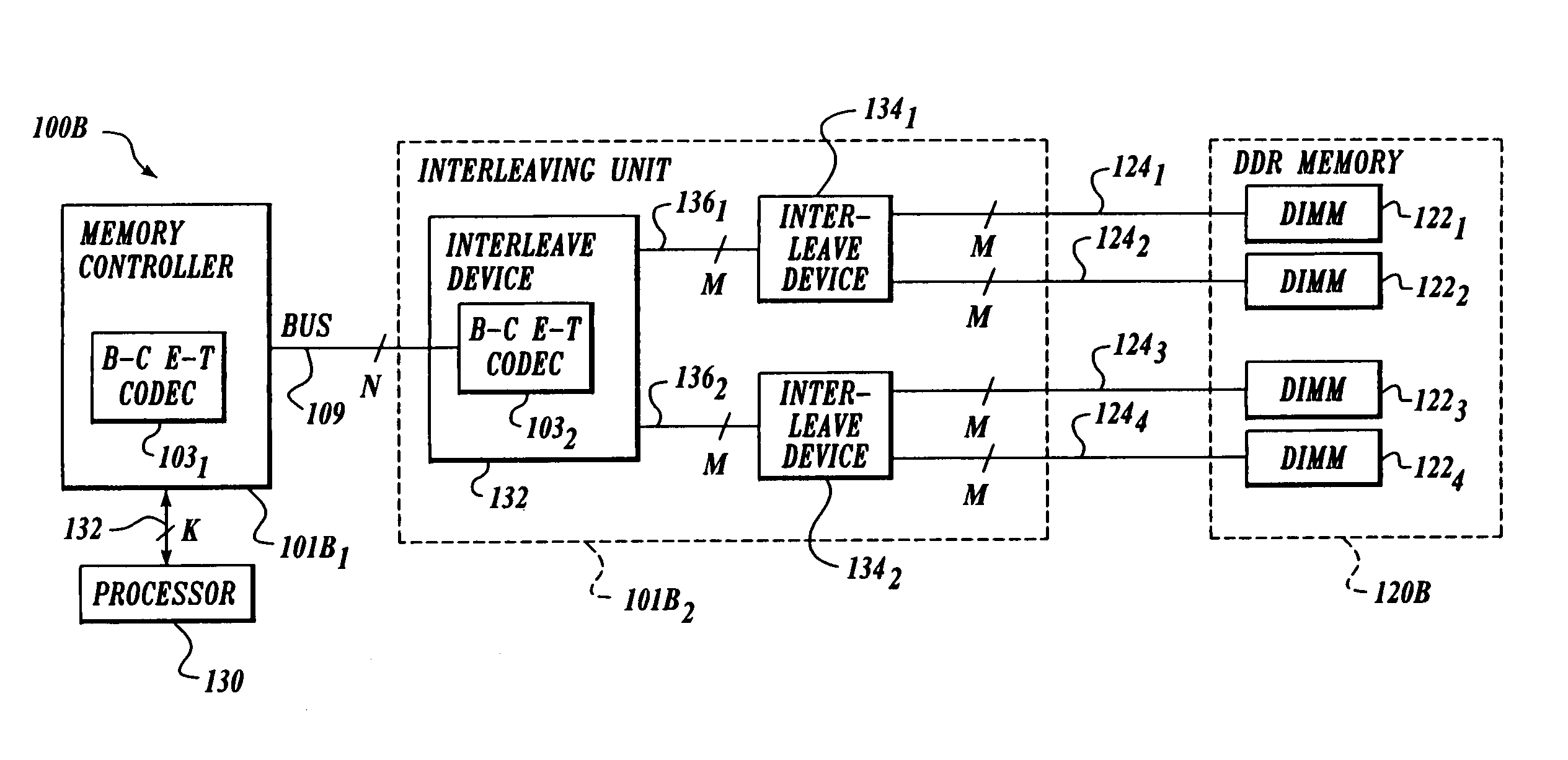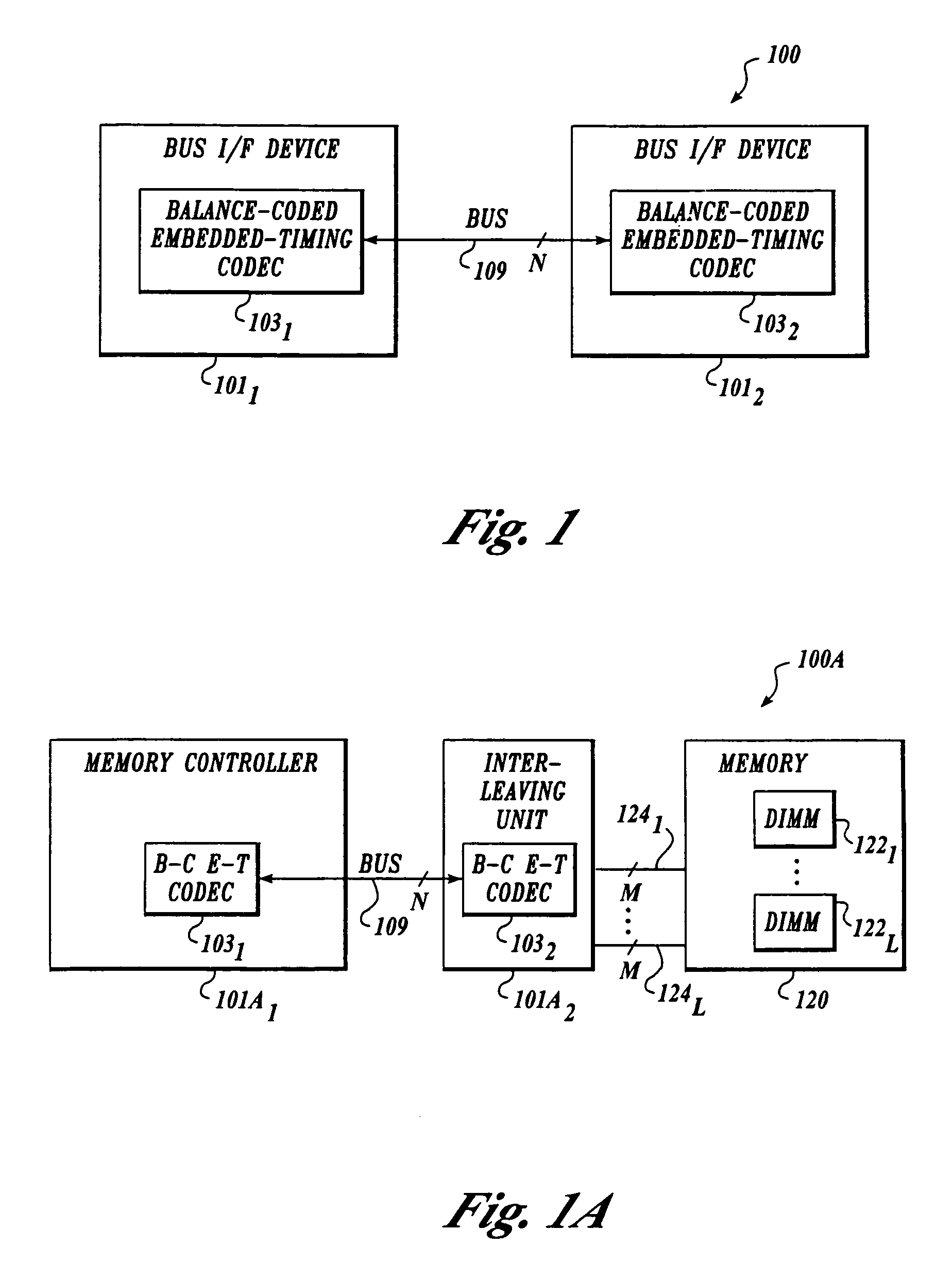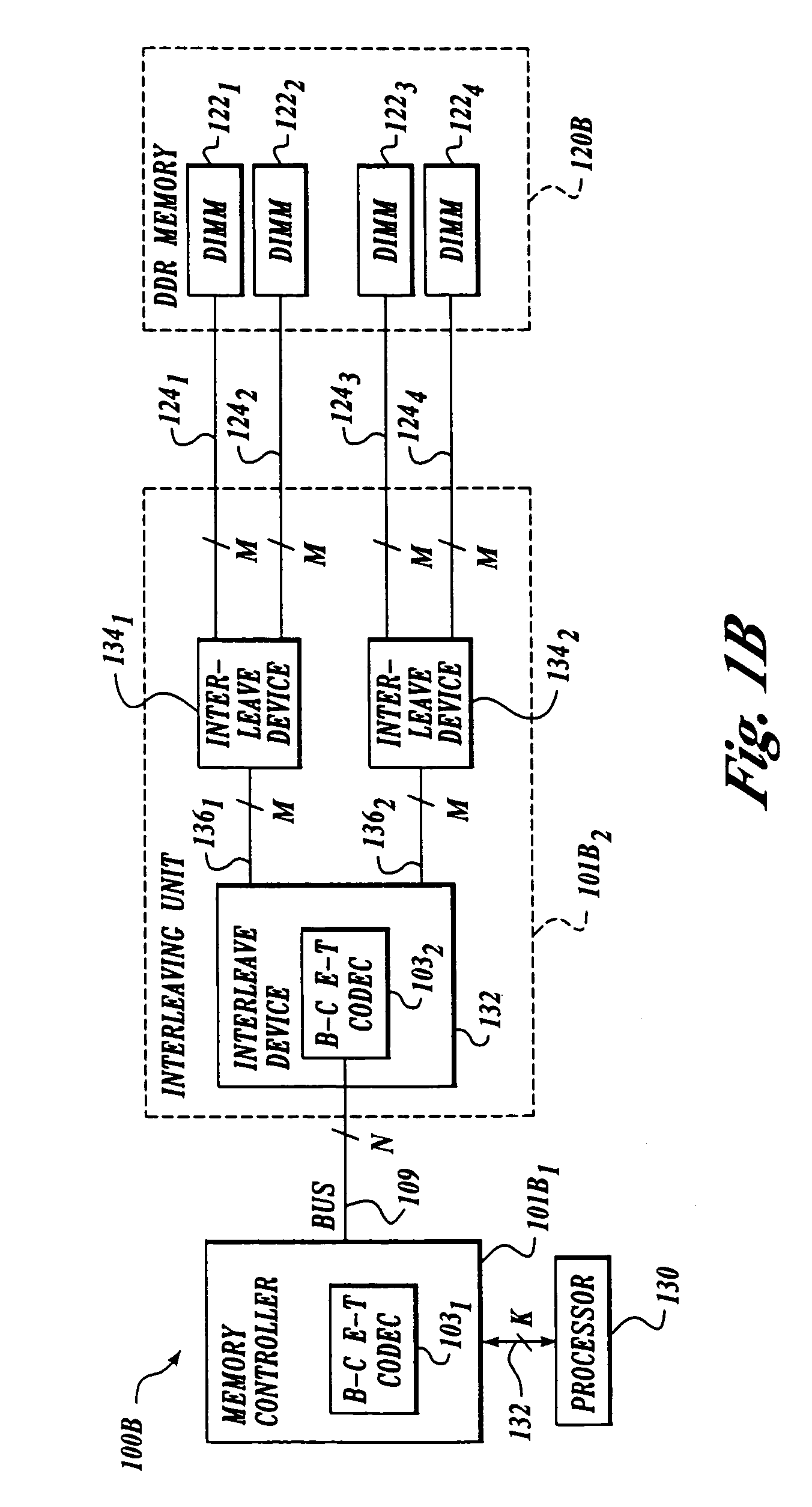Single-ended balance-coded interface with embedded-timing
a balanced-timing, single-ended technology, applied in the field of bus interfaces, can solve the problems of high-speed systems being susceptible to noise, differential signaling schemes having the disadvantage of doubling the number of signal lines and transceivers compared to single-ended schemes, and undesirable differential signaling, etc., to achieve low simultaneous switching output noise and fast bus frequency
- Summary
- Abstract
- Description
- Claims
- Application Information
AI Technical Summary
Benefits of technology
Problems solved by technology
Method used
Image
Examples
Embodiment Construction
[0016]FIG. 1 illustrates an exemplary system 100 with “generic” bus interface devices 1011 and 1012 having balance-coded embedded-timing coder / decoder (CODEC) 1031 and CODEC 1032, respectively. Bus interface devices 1011 and 1012 are coupled to a bus 109 having a data width of N bits. In this embodiment, system 100 supports bi-directional data traffic on bus 109. Bus 109 can be a terminated bus. In addition, in other embodiments, bus 109 may have additional lines for addressing and / or control so that the total width of bus 109 exceeds N bits. These additional lines need not be encoded.
[0017]CODECs 1031 and 1032 are each configured to encode a received stream of M-bit data symbols into N-bit data symbols to be transmitted onto bus 109, with N being greater than M. For reasons described below, N is constrained to be even in this embodiment. For example, in one embodiment, N is six and M is four (i.e., 4b–6b nibble encoding). In other embodiments, M is a multiple of four (corresponding...
PUM
 Login to View More
Login to View More Abstract
Description
Claims
Application Information
 Login to View More
Login to View More - R&D
- Intellectual Property
- Life Sciences
- Materials
- Tech Scout
- Unparalleled Data Quality
- Higher Quality Content
- 60% Fewer Hallucinations
Browse by: Latest US Patents, China's latest patents, Technical Efficacy Thesaurus, Application Domain, Technology Topic, Popular Technical Reports.
© 2025 PatSnap. All rights reserved.Legal|Privacy policy|Modern Slavery Act Transparency Statement|Sitemap|About US| Contact US: help@patsnap.com



